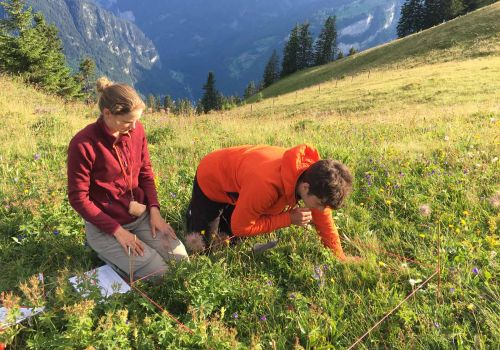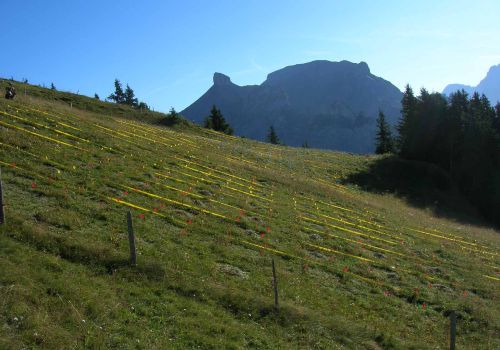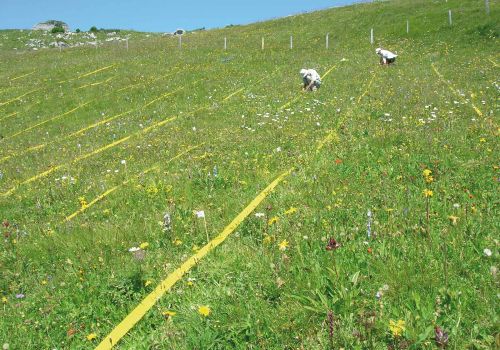
Dr. Lüdi's experimental pasture
The unique experimental pasture created from 1930 by Dr. Werner Lüdi was set a little below the Alpine Garden.
Here he wanted to demonstrate how a mat-grass pasture (very sparse pasture with poor fodder) could be improved by a variety of measures, i.e. how it could be made more productive and the quality of fodder upgraded. He set out 340 plots, each measuring one square metre, and subjected them to various measures similar to those used in the garden (fertilization, liming, mowing, digging over, seeding etc) always giving groups of five identical treatment. With this experiment, Dr. Lüdi was able to establish that several fertilizers greatly increased the quality and quantity of fodder. Lime, farmyard manure, phosphorus and basic slag had a powerful and long-lasting effect, nitrogen alone had little and a short-lived effect while hardly any effect could be detected with potash. He published these results in 1959 as a supplement to the annual report of the Alpine Garden and ended the experiment. The pasture then reverted to grazing land for a few years. In 1975, the documentation on this experiment was offered to Otto Hegg at the Botanical Institute in Bern. On an autumn visit to the pasture, he was chiefly amazed at the still visible differences between individual square plots. After grazing, the vegetation in some was very short while other plots had scarcely been touched. As a result, he changed the research direction, focusing on the still visible effects rather than higher productivity. The key questions were now:
- Which species had been reduced or had disappeared as a result of fertilization?
- Which species had flourished?
- How long was it until the species which had disappeared made their return?
- What were the effects of different fertilizers on individual species?
- What do these changes mean for nature conservation?
Thanks to Lüdi's well-chosen measures, meticulously recorded documentation and the many remaining marking posts, in his 1991 dissertation, Werner Dähler succeeded in precisely reconstructing the entire experimental area and following up the effects. This resulted in extremely valuable conclusions being drawn on the conservation of individual species, biodiversity and the long-term effects of the experiment. These investigations are on-going. Today, the effects of the experiment are still clearly visible, on some plots over 70 years after the last tending measures! Arnica, for instance, was totally ousted within a few years by all types of fertilizer. It is still rarely found in chalky areas, 70 years after the last application of lime. These findings are of particular interest as this is the world's second-oldest experiment subjecting natural vegetation to such measures.
An extract from the results is summarized on the poster «Why are Alpine pastures so colourful» in the exhibition on Schynige Platte. This is shown as «The long-term memory of vegetation».
Research has been revived with committee member Prof. Markus Fischer from the Institute for Plant Sciences.





